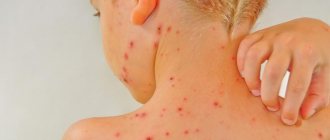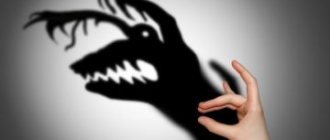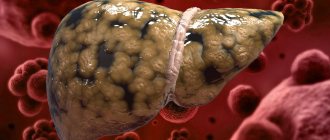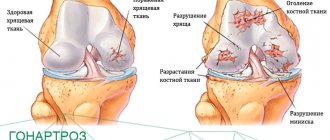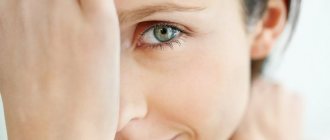Tachycardia is a rhythm disorder in which the heart beats faster than normal and, depending on the symptoms and causes, may require treatment or be a natural physiological reaction of the body. In official medicine, they speak of tachycardia when the heart rate and pulse at rest exceed 100 beats per 1 minute of measurement.
Normally, any person experiences tachycardia:
- during physical activity;
- in response to stress;
- injury or any illness.
In this case, sinus tachycardia develops, when the source of the rhythm is, as usual, the sinus node, but impulses are formed in it more often.
In other types of tachycardia, the primary acceleration of the rhythm occurs in the upper chambers of the heart (atria) or in the lower chambers (ventricles), without connection with the sinus node.
In some cases, increased heart rate may not be accompanied by any discomfort or complications. However, severe types of tachycardia can cause serious complications:
- heart failure;
- stroke;
- sudden cardiac arrest, heart attack and others.
Treatment (medication or surgery) can help control heart palpitations and address the cause.
Main characteristics
Sinus tachycardia is a form of arrhythmia, what does it mean? This type of tachycardia is caused by a disorder:
- generation of impulses by the sinus node, which controls heart rhythm;
- conduction of impulses from the sinus node to the ventricles.
The sinus node is the part of the heart that produces sinus rhythm. There, a wave of excitation arises, which spreads to the heart and contributes to its synchronous functioning.
In adults, the limit is considered to be a heart rate (HR) of 100 beats per minute . For children, this indicator is calculated by age, and a deviation is considered to be an excess of heart rate by 10% of the age norm.
With sinus tachycardia, the heart rate is 95–130 beats per minute (without physical activity), 150–160 with exercise . For athletes, this figure can reach 180–240 beats.
Forms
There are functional and pathological (or long-term) forms.
Functional
Functional is understood as an acceleration of sinus rhythm in response to stress (physical or emotional) or fever. The heart rate returns to normal as soon as the cause is eliminated.
Pathological
The pathological form occurs at rest. It is caused by extracardial and intracardial factors.
Differences from other species
There are also paroxysmal tachycardia and ventricular fibrillation.
Sinus tachycardia differs from the paroxysmal form in that in the first case the attack begins suddenly, the heart rate is 120–250 beats per minute , while maintaining the correct rhythm during the attack.
With physiological sinus tachycardia, heart rate increases smoothly; the paroxysmal form is characterized by suddenness.
Ventricular fibrillation is a life-threatening condition in which blood is not pumped out of the heart and the organ stops working . In this case, a chaotic contraction of myocardial fibers occurs (250–480 beats per minute).
Usually the symptom occurs as a complication of extensive transmural myocardial infarction, as well as due to shock and severe potassium deficiency in the blood.
Ventricular fibrillation requires urgent medical attention!
Is cardiac tachycardia dangerous and can you die from it?
If palpitations occur rarely, this is a sign of the initial development of a pathological process.
An increase in tachycardia attacks is an indication for consultation with a cardiologist and a full examination with treatment. Irregular heart rhythm leads to oxygen starvation, which negatively affects the functioning of the heart muscle. Depending on the type of tachycardia and the development of the pathological process in the vessels and heart, the prognosis for life can be either positive or negative.
There are 3 types of tachycardia that clearly pose a danger to life, but to varying degrees and depending on the type of pathological process:
- sinus tachycardia is the most favorable type of rapid pulse, since the correct heart rhythm is maintained; there is no danger to life;
- paroxysmal tachycardia – characterized by paroxysmal course and can be life-threatening;
- Ventricular fibrillation is the most dangerous type of tachycardia, when emergency medical attention is required to avoid fatal consequences.
In addition, in a pathologically high pulse, the course of the disease is conventionally divided into chronic and paroxysmal.
- With chronic high heart rate, it is observed constantly and persists at rest and even during sleep.
- In the second case, the symptom manifests itself in the form of paroxysms, the danger of which depends on the pulse rate, duration of the attack and type of heartbeat.
During palpitations, the human heart works hard. If attacks bother the patient regularly, this is quite dangerous. It is worth noting that in this case the ventricles do not have time to fill with blood, and the work of the heart worsens. Heart failure develops, and the risk of heart attacks and strokes increases.
Development mechanism
Sinus tachycardia develops according to one of the scenarios:
- Activation of the symptomatic system, which is part of the nervous system. The substance norepinephrine from nerve fibers activates the sinus node.
- Decreased activity of the parasympathetic system. Its substance acetylcholine inhibits the generation of impulses, which leads to a decrease in heart rate. When the activity of the parasympathetic system decreases, the role of the sympathetic system increases, resulting in an increase in heart rate.
- Direct impact of influencing factors on the sinoatrial node during normal functioning of the sympathetic and parasympathetic nervous system. Active substances act on impulse-generating cells and excite them.
Tachycardia in pregnant women
Pregnant women often suffer from tachycardia, but this is not a pathological condition. In the third semester, an increase in heart rate is normal due to the additional load on the body. A healthy woman has nothing to fear, but if she has previously had problems with the heart or blood vessels, it is recommended to consult a doctor.
Normally, pregnant women are helped by:
- exclusion of coffee, tea, energy drinks;
- low cholesterol diet;
- vitamins with magnesium;
- taking mild sedatives - for example, Persen.
More serious measures are prescribed only if the benefit to the mother outweighs the risk to the fetus. A woman is advised to reduce stress; moderate exercise will be beneficial.
Causes
The symptom occurs more often in young people . The reason for this is the immaturity of the nervous system. The body needs a balance of the sympathetic and parasympathetic nervous systems. But at a young age, the balance is poorly maintained, so imbalances arise, which causes an attack (cardioneurosis).
Various factors contribute to the development of sinus tachycardia. Physiological form - reaction to stress, stress, high temperature. As for pathological TS, a distinction is made between extracardiac and intracardial groups of factors.
Extracardiac factors include:
- Neurogenic - develops in individuals (usually young women) with an unstable nervous system, with a tendency to neuroses, depression, etc., which is explained by the high sensitivity of heart receptors to stress hormones.
- Toxic - caused by toxic substances - alcohol, tobacco, as well as internal factors (thyrotoxicosis, adrenal tumor - pheochromocytoma, more often manifested in women), chronic infections (tuberculosis, tonsillitis).
- Medicinal - occurs due to activity or overdose. This is how hormonal drugs, drugs for the treatment of lung diseases, hypertension, and antidepressants affect the body.
- Hypoxic - this is how the body reacts to oxygen deficiency. In turn, the cause of hypoxia is diseases of the respiratory system and blood pathologies, in which the delivery of gas to organs and systems is disrupted (anemia, leukemia, chronic blood loss, etc.).
Intracardiac factors are caused by heart disease . Often (but not always) the development of sinus tachycardia in people with heart disease indicates heart failure or impaired left ventricular function, since then there is a decrease in ejection fraction or a clinically significant deterioration of hemodynamics within the heart.
Most often, the intracardial form of TS develops with the following pathologies:
- chronic heart failure;
- angina attack due to ischemic heart disease;
- cardiomyopathy;
- myocardial infarction;
- acute myocarditis.
Find out more about the disease from the video:
Lifestyle correction
The best way to defeat tachycardia is to prevent its development. How to do it?
- You need to take care of your nerves. Mental balance is the key to health.
- Overwork, both physical and mental, negatively affects the functioning of the heart, so it is important to ensure that you get enough rest.
- A good night's sleep is the best way to relieve nervous tension and restore strength. Daily long walks in the fresh air contribute to good sleep.
- Everyone needs to play sports, but the load must be selected taking into account your capabilities. Tachycardia is not scary for a trained heart.
- There is no need to provoke attacks by drinking coffee or other products that excite the nervous system.
- A good mood, positive emotions, the ability to abstract from problematic situations - all this will help keep the heart healthy.
It is important to know how to deal with tachycardia and apply preventive measures in a timely manner. Folk remedies and recipes that have been proven over the years will always come to the rescue. Herbal medicine is a whole science about medicinal plants and how to use them for the benefit of health. But traditional medicine should remain the main method of combating the disease, and any other approaches should be used only after discussing them with the attending physician - any self-medication is fraught with negative consequences.
Symptoms
During an attack of sinus tachycardia, the patient may experience the following symptoms:
- “fluttering” of the heart, rapid heart rate;
- dyspnea;
- heaviness, “tightness” in the chest (occurs when there is no load);
- dizziness, loss of consciousness;
- compressive chest pain (no longer than 5 minutes) - with coronary heart disease;
- general weakness, decreased performance, intolerance to physical activity (in the pathological form).
Functional TS usually does not require medical intervention and goes away after the provoking factor is eliminated. However, manifestations such as chest pain and loss of consciousness are a reason to urgently consult a doctor.
How effective is treatment at home - prognosis
The classic tactics for treating mild cases of pathological tachycardia, which is an independent process (for example, attacks no more than once a month, the general condition is not impaired), involves taking medications and following basic treatment recommendations only at home. If you adhere to all the requirements, 80–90% of the time you can achieve a positive result.
Irregular, unpredictable attacks that disrupt the general condition (severe dizziness, drop or increase in blood pressure, etc.) require two-stage treatment:
Diagnostics
A complete picture of the severity of the condition is obtained after the examination. Diagnostic activities include:
- anamnesis analysis - the patient is asked to describe sensations, possible cause-and-effect relationships, the presence of chronic diseases, living conditions, bad habits, etc.;
- physical examination - examine the skin, study the condition of hair and nails;
- auscultation - the respiratory rate, wheezing and heart murmurs are determined, which makes it possible to identify the cause of the pathology;
- general blood test - shows anemia, leukocyte level (increases with chronic disease);
- biochemical blood test - gives an idea of the level of cholesterol (low and high density), glucose, potassium, creatine, urea, allows you to exclude diabetes mellitus, kidney disease, changes in the chemical composition of the blood;
- urinalysis (general) - excludes diseases of the urinary tract;
- hormonal analysis - to determine the level of hormones produced by the thyroid gland;
- echocardiography (echocardiography) - detects structural changes.
The main and most informative study is electrocardiography, or ECG, as well as a Holter electrocardiogram (recording is carried out continuously for 24–72 hours, at rest and during exercise).
ECG signs of sinus tachycardia are presented in this illustration:
The patient is prescribed consultations with a psychotherapist, otolaryngologist, and other specialists.
Folk remedies
Is it possible to cure tachycardia with folk remedies? Of course not. This method of therapy is considered only an addition to the main treatment prescribed by the attending physician.
Walnuts and honey are effective remedies not only for tachycardia, but also for many other diseases
Treatment of cardiac tachycardia at home involves changing the diet, using various infusions and decoctions, as well as taking other medicinal products. You need to eat regularly, and preferably at the same hours every day and in small portions. Overeating has a negative impact on the heart and increases the risk of an attack.
Experts recommend limiting your consumption of foods such as tea and coffee, alcohol, spicy and salty foods. On the contrary, you need to replenish your diet with fresh fruits and berries, for example, rowan berries, lingonberries and viburnum, vegetables, honey, and dried apricots. You can also use medicinal herbs in the treatment of tachycardia:
- valerian and motherwort (an equal volume of herbs is mixed and poured with boiling water in a ratio of 1:2; after infusing for an hour, the product is consumed orally during the day, 100 ml at a time);
- mint, cumin, fennel, chamomile (the ingredients are poured with boiling water in equal volumes and infused for an hour; the finished product is used in the same way as the previous method);
- motherwort, hawthorn, ground rosehip, large-leaf green tea (the components in equal proportions are poured with boiling water, infused for an hour and consumed orally 2 times a day, 100 ml).
One of the common remedies used in the treatment of tachycardia at home is honey in combination with nuts. The remedy is prepared as follows:
- 2 walnuts are peeled and the internal contents are crushed;
- then mix with 2 tsp. honey and juice of one lemon wedge;
- The finished product must be chewed slowly and washed down with clean, still water.
It is recommended to consume this mixture at night, after the last meal, in the amount of 1 teaspoon at a time. And of course, the basic rule that must be followed during the treatment of tachycardia is the complete exclusion of stressful situations, worries, and emotional overload.
How and with what to treat
The main goal of treatment is to eliminate the cause of the attacks, since sinus angina is a symptom of other ailments. Therapy is selected and prescribed by a cardiologist.
Correction of daily routine and habits
This block of activities includes:
- giving up bad habits - drinking alcohol, drugs, smoking;
- diet correction - patients are recommended to eat foods rich in fiber and give up fatty, hot, spicy foods, reduce the amount of coffee and tea;
- adherence to sleep and rest patterns.
Elimination of chronic diseases
If the examination reveals that the cause of tachycardia is an infection, then treatment is aimed at eliminating it. The patient is prescribed sanitation for diseases of the oral cavity, removal of a diseased tooth or inflamed tonsils, and antibiotic therapy .
In case of iron deficiency and anemia, it is recommended to take medications with this element; in case of bleeding, the administration of solutions is recommended to restore the volume of the blood mass.
Lack of oxygen due to bronchopulmonary diseases is eliminated by introducing gas through a catheter into the nasal passages.
Prescribed drugs
Medicines to eliminate the tachycardia itself are prescribed when the patient cannot tolerate the rapid heartbeat. For sinus tachycardia, the following drugs are used:
- beta blockers - block receptors that respond to the stress hormones adrenaline and norepinephrine;
- if-channel inhibitors - control the degree of excitation in the sinus node, heart rate;
- sedatives based on medicinal plants - motherwort, valerian root, hawthorn.
Recovery
The patient may be indicated for spa treatment in Kislovodsk and other health resorts if the cause is intracardial factors. In other cases, rehabilitation measures depend on the underlying disease.
It is recommended to follow these rules:
- eliminate intense emotional stress - at home and at work;
- sleep 8 hours a day;
- eat right, avoiding spicy and fatty foods;
- eat vegetables, herbs, fish (especially sea fish) every day;
- give up bad habits;
- do gymnastics (at least 30 minutes daily);
- control body weight.
Controversial techniques
Doctors argue about whether it is possible to take cardiac glycosides for sinus tachycardia. This applies in particular to digoxin. According to the Russian method, a combination of beta blockers and digoxin, sometimes with calcium antagonists, achieves clear control over heart rate.
The range of drugs for the treatment of tachycardia is limited, since it may have side effects with long-term therapy. If drug therapy is not possible, resort to electrical stimulation of the myocardium.
Sinus tachycardia in the elderly is treated surgically, with pacemakers installed, which eliminates the blockade of the atrioventricular node.
Treatment
Treatments for tachycardia are aimed at eliminating its cause, slowing the rapid heart rate, preventing subsequent episodes, and minimizing complications.
Slowing down a fast heartbeat
The following methods can be used to stop an attack of tachycardia:
- vagal tests: cough, deep breaths with straining, imitation of vomiting, washing with cold water;
- administration of antiarrhythmic drugs;
- Electrical cardioversion: applying an electric current to the heart to restore rhythm when medications are ineffective.
Preventing attacks of tachycardia.
You can prevent the development of tachycardia in the future using the following methods:
- catheter radiofrequency ablation: destruction of abnormal lesions using a catheter inserted into the heart through a large vessel (for example, in WPW syndrome);
- constant use of antiarrhythmic drugs;
- implantation of a pacemaker or cardioverter-defibrillator that controls the normal rhythm;
- open heart surgery (for example, “maze” surgery, which results in scarring that prevents the passage of abnormal impulses through the heart muscle).
Prevention of thrombosis.
Some patients with tachycardia have an increased risk of developing blood clots and therefore having a heart attack or stroke. In these cases, the doctor prescribes medications that “thin” the blood.
Treatment of the underlying disease.
If tachycardia is caused by another disease, for example, thyroid disease or obesity, then eliminating the underlying health problem will help relieve the patient from palpitations.
Forecast
The prognosis is quite serious if sinus tachycardia is a symptom of heart failure or left ventricular dysfunction. Then the course of the disease worsens.
It is important to remember that sinus tachycardia can be a manifestation of other ailments . But in childhood, pregnancy and adolescence this is often the norm. Then the medications can be harmful.
Therefore, taking any action on your own is prohibited. Only a specialist can determine the degree of danger and the advisability of prescribing medications after an extensive examination.
What medications for tachycardia can be taken at home?
By following general recommendations for the treatment of tachycardia, the essence of which is to normalize diet and lifestyle, only a delayed positive result can be achieved (after several months or years). Drug therapy is an integral component of the treatment process, without which severe and persistent tachycardia at home cannot be eliminated.
You should not choose medications for yourself to take on a regular basis, even if you know the cause of tachycardia.
Only a specialist can fully study the individual characteristics of the disease and, after weighing the pros and cons, select the optimal drug treatment. Some cases of tachycardia (paroxysmal and arrhythmic) can only be eliminated surgically or by implanting a pacemaker.
The most common drugs prescribed to patients with tachycardia.
Reflex type of action
They can be accepted by everyone. This:
- Corvalol,
- corvalment,
- corvaltab,
- validol.
Sedative type of action
They are most appropriate if tachycardia is caused by psychogenic influences. This:
- motherwort,
- glycized,
- valerian,
- novo-passit,
- person,
- barbared,
- gidazepam.
Beta blockers
This is the main group of drugs against tachycardia. When taking them, blood pressure control is required, as they reduce it:
- concor,
- bisoprolol,
- propranolol,
- metoprolol,
- carvedilol.
Calcium channel blockers
These are short-acting drugs (up to 6 hours), more suitable for emergency relief of attacks, reduce blood pressure:
- verapamil,
- isoptin.
Potassium and magnesium supplements
They can be used by all patients:
- Magne B6,
- Asparkam,
- Panangin.
Cardiac glycosides
These are reserve drugs for emergency care, as well as in patients with heart failure:
- strophanthin,
- digoxin,
- korglykon.
Potassium channel blockers
Their use is more appropriate in patients with arrhythmias and severe paroxysms, as well as tachycardia in combination with low blood pressure:
- aritmil,
- cordarone,
- amiodarone.
Variety
Sinus tachycardia has two types:
- Physiological tachycardia - develops against the background of physical or emotional stress, or accompanies a febrile syndrome. It disappears immediately after exposure to unfavorable factors and does not require drug correction. This is the so-called compensatory reaction of the body to changes in the state of the body.
- Pathological tachycardia is a consequence of damage to the sinoatrial node of the conduction system of the heart. This condition develops against the background of complete well-being and is corrected only with the help of medication.
When is tachycardia not a sign of illness?
In the following cases, rapid heartbeat is not a pathology:
- After physical activity.
- During the hot season.
- During strong emotional experiences.
- Increased body temperature.
Hangover: one step from tachycardia to panic attack!
Severe hangover syndrome, or more simply put, a hangover, is a special case when an accelerated heartbeat may not be a sign of any disease. Such tachycardia can cause panic attacks, since people “hungover” often mistake tachycardia for a heart attack. To avoid ending up in an unpleasant situation, you need to drink in moderation or not drink at all. In extreme cases, motherwort extract and similar sedatives can help.
Physiological tachycardia is not accompanied by: shortness of breath, chest pain, fainting, darkening of the eyes, dizziness. After the causative factor of tachycardia is eliminated, the heart rate quickly returns to normal.
Fainting
Strictly speaking, fainting is not even a complication of tachycardia, but is one of the accompanying symptoms that can lead to dire consequences. Loss of consciousness during a sudden attack of tachycardia occurs without a gradual deterioration of the condition. With rapidly emerging acute hypoxia, loss of consciousness can occur within several tens of seconds from the onset of the attack. Unexpected loss of consciousness due to an attack of tachycardia is one of the causes of domestic and industrial injuries, as well as road accidents.
Prevention
The following recommendations will help reduce the frequency of tachycardia attacks:
- Dieting. In fact, there is no special diet for tachycardia. However, avoiding certain foods can reduce the number of attacks and improve your quality of life. You should avoid drinking alcoholic beverages, strong coffee and tea (and green tea too). Products containing animal fats can increase the risk of heart attack, atherosclerosis, and, consequently, tachycardia. They are recommended to be consumed in small quantities.
- To give up smoking. Nicotine constricts blood vessels, promoting ischemia and tachycardia.
- Limiting excess physical activity, which increases your heart rate. It is useful to engage in physical therapy under the guidance of an instructor.
Health & Medicine
Sudden cardiac death
Sudden cardiac death refers to cases of death within 6 hours from the onset of the first cardiogenic symptoms. Rapid death in most cases is a consequence of ventricular fibrillation.
An attack of tachycardia such as ventricular fibrillation quickly leads to acute heart failure and disturbances in the pumping function of the heart. An almost complete cessation of blood pumping leads to stagnation in the bloodstream and increasing general hypoxia. Due to severe oxygen starvation, necrotic changes develop in the myocardium and brain tissue.
Signs of sudden death:
- Stopping breathing;
- Absence of pulse, including the carotid artery;
- Sudden loss of consciousness;
- Pupil dilation.
This complication requires immediate resuscitation with artificial respiration and the use of a defibrillator to restore normal heart rhythm.
Types of sinus tachycardia
It is normal for children The occurrence of sinus tachycardia in childhood can be associated with fever, acute infectious processes, and disorders of the nervous system. The state of the pulse mainly depends on the age of the child, so you need to check the heart rate table calculated by age:
Table: Normal ranges for sinus tachycardia
| Age | Limits of normal values (bpm) |
| newborns (up to 1 month of life) | 110-170 |
| from 1 month to 1 year | 100-160 |
| from 1 year to 2 years | 95-155 |
| 2-4 years | 90-140 |
| 4-6 years | 85-125 |
| 6-8 years | 78-118 |
| 8-10 years | 70-110 |
| 10-12 years | 60-100 |
| 12-15 years | 55-95 |
| 15-50 years | 60-80 |
| 50-60 years | 65-85 |
| 60-80 years | 70-90 |
Video - sinus tachycardia in children
In adolescents, functional tachycardia most often occurs, which develops against the background of emotional lability and is characterized by neurogenic disorders. It manifests itself as increased fatigue, weakness, irritability, there are signs of an imbalance of the vegetative-vascular system - sweating, dizziness, a feeling of trembling, frequent urination.
Pregnant women often experience attacks of palpitations, which occur even in those who have not previously felt this. This is associated with an increase in blood volume in a woman’s body, an increase in the load on the heart muscle, and changes in the hormonal state in the body. Also, an enlarging uterus increases pressure in the abdominal cavity, which also contributes to the development of palpitations. To avoid complications in the form of gestosis, antenatal clinics closely monitor the progress of pregnancy.
Video - sinus tachycardia during pregnancy
In older people, due to the weakening of many processes in the body, the risk of developing sinus angina increases. As a rule, at this age there are already many diseases that more or less provoke its development.
Pulmonary edema
Congestion in the pulmonary circulation against the background of a disorder in the pumping function of the heart can lead to pulmonary edema. Since blood intake in the left sections is difficult due to arrhythmia, it accumulates in the pulmonary circulation. The pressure in the tissues increases, and gas exchange processes are disrupted. Excess fluid begins to leak into the alveoli.
With increasing pulmonary edema, the following are observed:
- Wheezing in the lungs;
- Wet cough producing foamy pinkish sputum;
- Profuse sweating;
- Sudden blue or pale discoloration of the skin.
Mode Tips
Regardless of what type of therapy is used for treatment, the patient must follow dietary and regimen recommendations. Meals for tachycardia should be frequent and small. Consumption of fatty and high-calorie foods should be kept to a minimum. This applies to products with a high content of sugar, dyes, flavor enhancers and other substances harmful to the body.
Walking and physical activity should be given great importance. For patients with cardiovascular diseases, swimming, yoga, and walking at a slow pace are best. The room must be ventilated several times a day and the air humidity must be monitored - it should not be lower than 40%.
Sinus tachycardia is a pathology that requires an integrated approach to diagnosis and treatment. For a successful result of the therapy, it is important to follow all the doctor’s prescriptions and recommendations, as well as give up bad habits and control physical activity. If the patient continues to lead a sedentary lifestyle, eat high-calorie foods low in minerals and vitamins, and cannot give up bad habits, the effectiveness of any treatment method will be minimal.
Cardiogenic shock
Against the background of disturbances in filling the heart with blood, acute left ventricular failure may develop during a prolonged attack of tachycardia. In this case, the mitral and aortic valves are affected. Ultimately, almost no blood enters the systemic circulation, which can lead to death.
A characteristic symptom of developing cardiogenic shock is a sharp drop in blood pressure to a critically low level. The remaining symptoms are a consequence of low blood pressure. Treatment is aimed at stabilizing blood pressure within normal limits and restoring normal heart rhythm.
In cardiogenic shock, the following are observed:
- Impaired consciousness;
- Sharp pallor of the skin;
- Weakening of kidney function;
- Pulmonary edema.
Cardiogenic shock is an emergency condition. If you suspect the development of this complication, you must call an ambulance.
